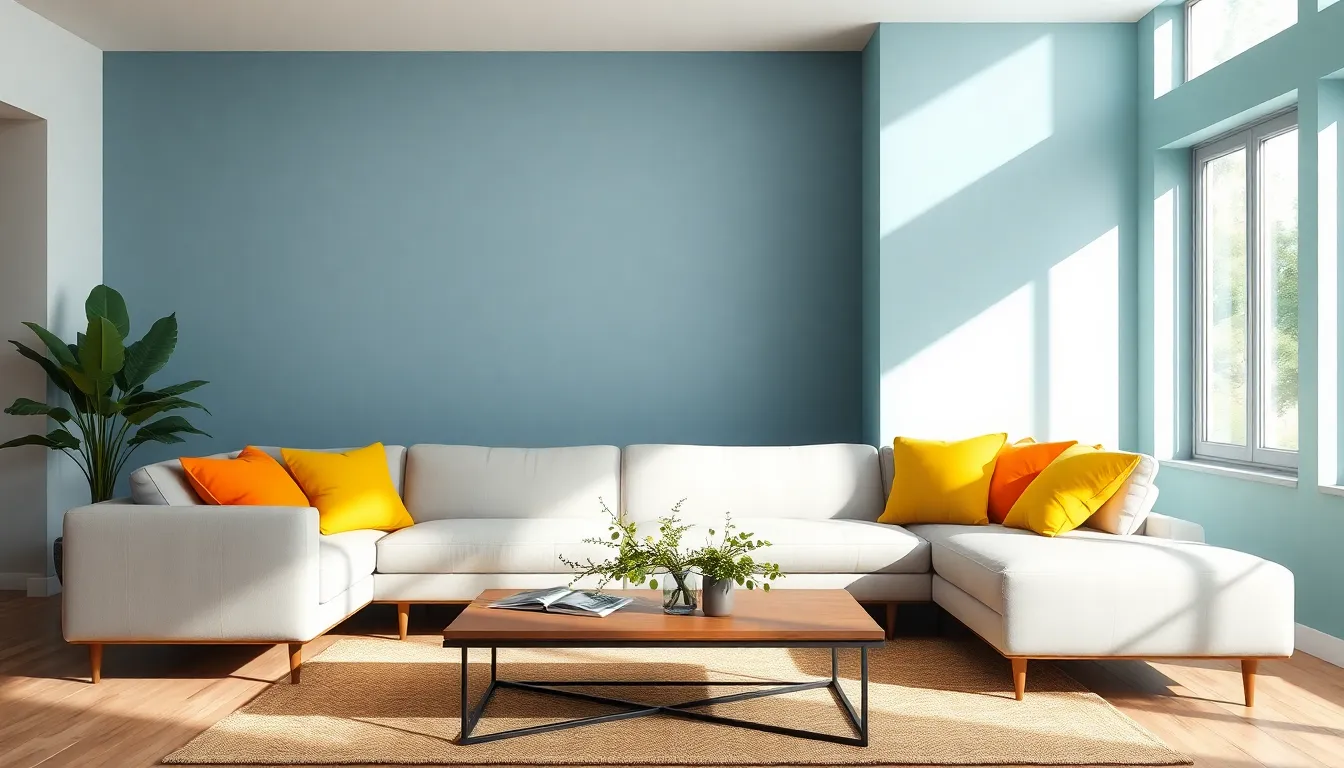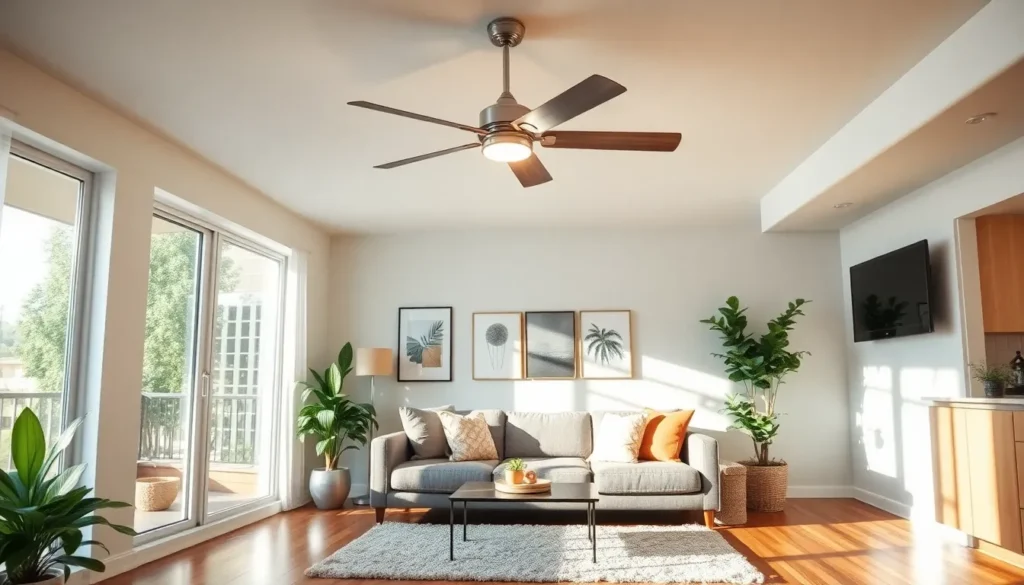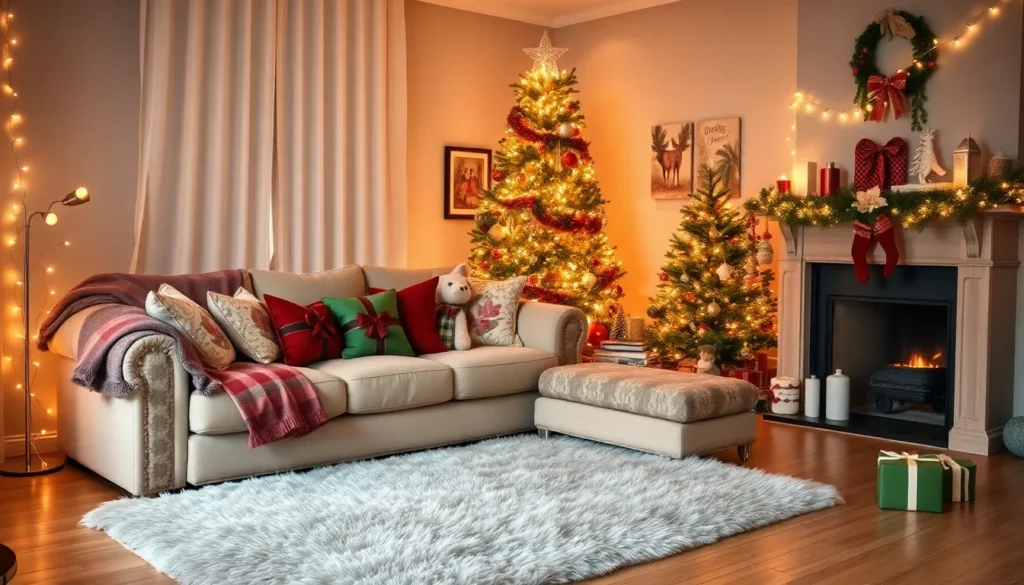When it comes to decorating living rooms, the wrong color can feel like wearing socks with sandals, just wrong on so many levels. Choosing the perfect hue can transform a dull space into a vibrant oasis. Picture this: your living room bursting with energy, warmth, and an inviting atmosphere, all thanks to the right colors. Whether someone is pursuing a chic modern aesthetic or a cozy cottage vibe, understanding color choices can be the difference between ‘meh’ and ‘wow.’ Let’s jump into the color spectrum that can turn any living room into a visual masterpiece.
Table of Contents
ToggleUnderstanding Color Psychology

Color psychology is powerful. It influences mood, perception, and even behavior. For example, blues can evoke calmness, while reds might ignite passion and energy. This isn’t just a wild theory, research shows that color impacts the way people feel caught in a space. The hues on your walls can determine if it serves as a sanctuary for relaxation or a hub of lively activity.
Consider the calming effect of light greens and soft blues. They invite relaxation and tranquility, perfect for lounging after a long day. On the flip side, bright yellows and lively oranges can energize a room, making them ideal for social gatherings. Understanding these dynamics can help anyone or everyone choose colors that match their living room’s purpose and mood.
Popular Color Palettes for Living Rooms
Color palettes bring unity to spaces, holding various hues in harmony. Popular combinations start with neutral bases, like soft grays or creams, paired with accent colors that pop.
- Monochromatic Schemes: Shades of one color, think varying blues from navy to sky, create an elegant and cohesive look.
- Complementary Colors: Opposites on the color wheel work wonders, like pairing orange with blue: it creates vibrant yet balanced contrast.
- Analogous Colors: These colors sit next to each other on the wheel: think blues and greens for a serene, cohesive space. This palette works beautifully in a living room where relaxation reigns.
- Bold Accents: Black and white with splashes of bright colors invite drama and contemporary flair, allowing furniture and decor to shine.
The choice of palette not only provides aesthetic harmony but also reflects personal style.
Choosing the Right Color Based on Room Size
Room size can dictate color choice. Smaller spaces benefit from lighter colors, making the area feel larger and airier. Light pastels or whites bounce light, creating an illusion of space.
Conversely, larger rooms can handle darker hues. Deep grays or jewel tones can help define areas within expansive spaces, creating cozy nooks perfect for conversation.
Also, consider ceiling height. If ceilings are low, lighter colors can elevate them visually, while high ceilings may welcome darker shades, adding drama and depth.
Tips For Combining Colors
Combining colors isn’t just about throwing hues together. There is a method to this harmonious madness.
- 70-30 Rule: Use 70% of a dominant color, 30% of a secondary for balance. This allows for a clean, uncluttered look without overwhelming the senses.
- Consider Undertones: Always check for undertones in the paint. A warm beige can clash with a cool blue, while a soft cream might harmonize beautifully.
- Use Patterns: Patterns can integrate multiple colors without chaos. Think patterned cushions or a rug that pulls together several shades in the palette.
- Test Swatches: Before finalizing colors, test swatches on the walls. Colors look different based on lighting, so viewing them at different times can lead to the best choice.
- Seek Inspiration: Platforms like Pinterest or design shows are rich sources for complementary color ideas, often showcasing how colors interact in beautiful ways.
Accent Colors To Enhance Your Space
Accent colors bring life to living rooms, shaking things up and adding interest. They serve as focal points, pulling the eye to specific features. Consider the following for an invigorating touch:
- Cushions and Throws: Swap these out seasonally for a fresh feel.
- Artwork: Choosing frames that tie colors together can enhance overall unity.
- Rugs: A well-placed rug can ground a room and introduce additional colors without overwhelming the space.
- Furniture: Bold-colored chairs or a vibrant ottoman can completely change the atmosphere.
- Plants: Greenery adds both color and life, creating a natural, fresh ambiance.
Accents allow for playful experimentation without committing to full-wall paint changes.
Trends In Living Room Colors
Color trends shift like the seasons. Presently, earthy tones dominate, think terracotta, rich browns, and forest greens. These colors evoke nature, creating warm, inviting spaces that resonate with comfort.
Besides, soft hues like pale pinks and soft blues are trending, as they balance modern minimalism with warmth and creativity. Also trending are bold, unexpected shades like deep teal or mustard yellow, which shake up traditional palettes and bring a modern edge.
The key takeaway? Don’t shy away from exploring bolder choices. Mixing contemporary trends with personal tastes can result in a unique, personalized living room.









